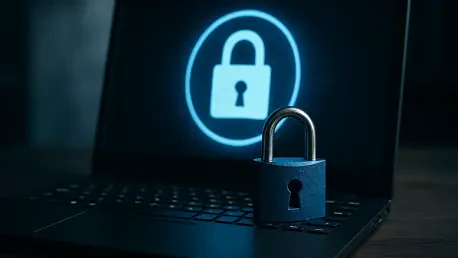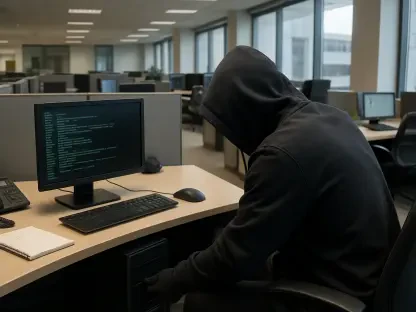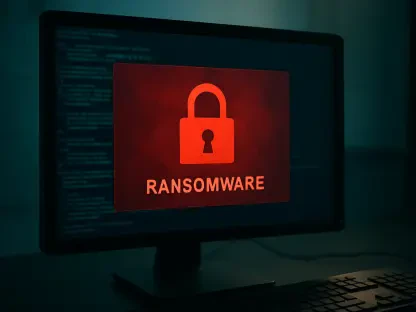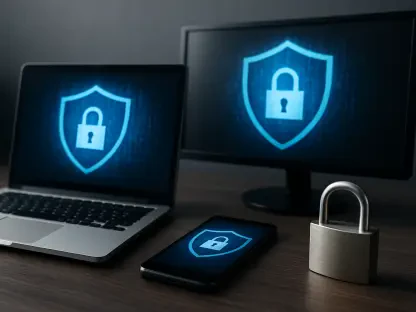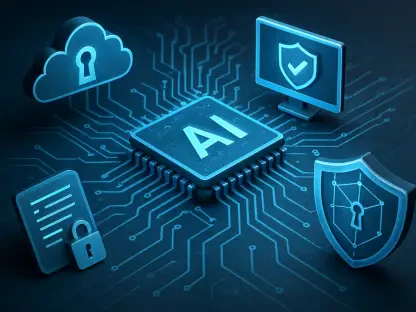In an era where digital transactions and online interactions dominate daily life, the emergence of sophisticated malware like DarkCloud Infostealer poses a grave risk to personal and organizational data security, demanding urgent attention and robust defenses. Recently relaunched as version 4.2, this malicious software has been identified by security researchers as a formidable tool in the hands of cybercriminals aiming to harvest sensitive information. With capabilities to steal everything from browser passwords to cryptocurrency wallets, DarkCloud exemplifies the persistent evolution of cyber threats that exploit human vulnerabilities and technical loopholes. Its resurgence, noted during an attempted attack on a manufacturing client, signals an urgent need for heightened awareness and robust defenses. This dangerous infostealer not only targets individual users but also poses significant challenges to businesses that rely on secure data handling. As cybercrime adapts to law enforcement crackdowns, understanding the mechanisms and impact of such threats becomes paramount for safeguarding digital assets against relentless attackers.
Unveiling the Mechanics of a Persistent Threat
The inner workings of DarkCloud Infostealer reveal a meticulously designed piece of malware crafted to infiltrate systems with alarming efficiency. Built using the VB6 programming language in its latest iteration, this infostealer represents a complete overhaul aimed at enhancing its stealth and data extraction capabilities. It targets a broad spectrum of information, including login credentials from browsers, credit card details, website cookies, and even keystrokes logged from unsuspecting users. Beyond personal data, it extends its reach to files like documents and spreadsheets, as well as contact details from email clients such as Thunderbird. The stolen data is then transmitted to attackers through varied channels like Telegram, FTP, or web panels using PHP scripts. This multifaceted approach to exfiltration underscores the malware’s sophistication, making it a versatile tool for cybercriminals seeking to exploit diverse datasets for financial gain or further malicious activities.
Equally concerning is the adaptability of DarkCloud’s distribution network, which continues to evolve in response to external pressures. Initially sold on underground forums, the malware’s availability shifted to a dedicated website and direct communication platforms like Telegram after law enforcement temporarily disrupted a major cybercrime forum. Marketed by individuals using pseudonyms, the infostealer’s accessibility to potential buyers highlights the resilience of cybercrime ecosystems. This adaptability ensures that even as authorities attempt to dismantle illicit marketplaces, new avenues for distribution emerge almost seamlessly. The reliance on phishing as a primary delivery method further amplifies the threat, with attackers crafting deceptive emails themed around financial transactions to lure victims into downloading malicious files. These emails often mimic legitimate correspondence, exploiting trust to bypass initial user skepticism and gain entry into secure systems, thereby initiating the data theft process.
The Broader Impact on Cybersecurity Landscapes
The implications of DarkCloud Infostealer extend far beyond individual victims, casting a shadow over entire industries that depend on data integrity. Manufacturing firms, financial institutions, and even small businesses face heightened risks as this malware indiscriminately targets sensitive information critical to operations. The theft of cryptocurrency wallets, for instance, directly impacts users who store digital assets, while compromised FTP credentials can lead to unauthorized access to corporate servers. Such breaches often result in significant financial losses, reputational damage, and potential legal ramifications for organizations failing to protect client data. Moreover, the ability of DarkCloud to harvest contact information from email clients facilitates further phishing campaigns, creating a vicious cycle of exploitation that can affect an ever-widening circle of victims and perpetuate the spread of malware across networks.
Addressing this pervasive threat demands a multilayered approach to cybersecurity that goes beyond traditional defenses. Security researchers have already taken steps to counter DarkCloud by developing tools to extract its configuration details and decode obfuscated code, providing valuable insights for threat mitigation. However, the cornerstone of prevention lies in robust email protection mechanisms designed to filter out suspicious compressed files containing executable content. These filters serve as a critical first line of defense against phishing attempts, which remain the most common vector for malware deployment. Educating users to recognize deceptive emails and avoid interacting with unverified attachments is equally vital, as human error often serves as the entry point for such attacks. The ongoing challenge for cybersecurity professionals is to stay ahead of evolving threats like DarkCloud by continuously updating defensive strategies and fostering a culture of vigilance among all stakeholders.
Strengthening Defenses Against Evolving Malware
Reflecting on the persistent challenge posed by DarkCloud Infostealer, it becomes evident that cybercriminals leverage both technological innovation and social engineering to breach data security. The relaunch of version 4.2 marked a significant escalation in the malware’s capabilities, targeting an extensive array of personal and financial information with ruthless precision. Its distribution through underground channels and direct platforms demonstrates the difficulty of eradicating cybercrime networks despite coordinated law enforcement efforts. Moving forward, the focus must shift to actionable solutions that empower individuals and organizations alike. Investing in advanced email security systems to block malicious attachments before they reach inboxes is a practical step that can significantly reduce infection rates. Additionally, adopting regular security training programs ensures that employees remain alert to phishing tactics, thereby minimizing the risk of inadvertent data exposure.
Beyond immediate defenses, collaboration within the cybersecurity community offers a promising path to countering such threats. Sharing intelligence on malware like DarkCloud enables faster identification of new variants and distribution methods, allowing for preemptive action. Encouraging the use of tools developed by security researchers to analyze and neutralize infostealers can further bolster collective resilience. As cyber threats continue to evolve, staying proactive with regular software updates and patch management will be crucial to closing vulnerabilities that attackers exploit. Ultimately, the battle against sophisticated malware demands a commitment to continuous improvement in security practices, ensuring that defenses adapt as swiftly as the threats themselves. By prioritizing these strategies, the digital landscape can be better protected from the insidious reach of infostealers and the broader spectrum of cybercrime.
